Perceived Sensory Dimensions of Green Areas: An Experimental Study on Stress Recovery
Abstract
:1. Introduction
1.1. Restorative Qualities
1.2. Perceived Sensory Dimensions
1.3. Questions and Aims
2. Materials and Methods
2.1. Methodological Considerations
2.2. Participants
2.3. Stimulus Material
2.3.1. Video Clip as Stressor
2.3.2. The Presentation of PSD Environments
2.3.3. Counterconditioning
2.4. Measures
2.5. Procedure
2.6. Statistical Analysis
3. Results
3.1. Descriptive Statistics
3.2. One-Way ANOVA
3.3. Repeated Measures
3.3.1. Within-Subject Main Effects and Interactions
3.3.2. Between-Subjects Effect
4. Discussion and Conclusions
4.1. The Supportive Environment Theory as a Framework for PSDs
4.2. Using the Restorative Potential of all Eight PSDs
4.3. Limitation
Author Contributions
Funding
Institutional Review Board Statement
Informed Consent Statement
Data Availability Statement
Acknowledgments
Conflicts of Interest
References
- Magee, L.; Scerri, A.; James, P.; Thom, J.A.; Padgham, L.; Hickmott, S.; Deng, H.; Cahill, F. Reframing social sustainability reporting: Towards an engaged approach. Environ. Dev. Sustain. 2013, 15, 225–243. [Google Scholar] [CrossRef]
- Woodcraft, S. Understanding and measuring social sustainability. J. Urban Regen. Renew. 2015, 8, 133–144. [Google Scholar]
- Andersson, E.; Tengö, M.; McPhearson, T.; Kremer, P. Cultural ecosystem services as a gateway for improving urban sustainability. Ecosyst. Serv. 2015, 12, 165–168. [Google Scholar] [CrossRef]
- Egorov, A.I.; Mudu, P.; Braubach, M.; Martuzzi, M. Urban Green Spaces and Health; WHO Regional Office for Europe: Copenhagen, Denmark, 2016; Available online: https://www.google.com/url?sa=t&rct=j&q=&esrc=s&source=web&cd=&ved=2ahUKEwje09PAjb_wAhXK4jgGHd47BTIQFjABegQIAx-AD&url=https%3A%2F%2Fwww.euro.who.int%2F__data%2Fassets%2Fpdf_file%2F0005%2F321971%2FUrban-green-spaces-and-health-review-evidence.pdf&usg=AOvVaw0Kr01cMTUgx1G-RfD5OtHm (accessed on 14 October 2020).
- Twohig-Bennett, C.; Jones, A. The health benefits of the great outdoors: A systematic review and meta-analysis of greenspace exposure and health outcomes. Environ. Res. 2018, 166, 628–637. [Google Scholar] [CrossRef]
- Kemeny, M.E. The psychobiology of stress. Curr. Dir. Psychol. Sci. 2003, 12, 124–129. [Google Scholar] [CrossRef]
- Van den Bosch, M.; Ward-Thompson, C.; Grahn, P. Preventing Stress and Promoting Mental Health. In Oxford Textbook of Nature and Public Health: The Role of Nature in Improving the Health of a Population; Oxford University Press: Oxford, UK, 2017; pp. 108–115. [Google Scholar]
- Luine, V.N.; Beck, K.D.; Bowman, R.E.; Frankfurt, M.; Maclusky, N.J. Chronic stress and neural function: Accounting for sex and age. J. Neuroendocrinol. 2007, 19, 743–751. [Google Scholar] [CrossRef]
- Schubert, C.; Lambertz, M.; Nelesen, R.A.; Bardwell, W.; Choi, J.-B.; Dimsdale, J.E. Effects of stress on heart rate complexity—A comparison between short-term and chronic stress. Biol. Psychol. 2009, 80, 325–332. [Google Scholar] [CrossRef] [PubMed] [Green Version]
- Abraham, A.; Sommerhalder, K.; Abel, T. Landscape and well-being: A scoping study on the health-promoting impact of outdoor environments. Int. J. Public Health 2010, 55, 59–69. [Google Scholar] [CrossRef] [PubMed] [Green Version]
- Stigsdotter, U.K.; Corazon, S.S.; Sidenius, U.; Kristiansen, J.; Grahn, P. It is not all bad for the grey city—A crossover study on physiological and psychological restoration in a forest and an urban environment. Health Place 2017, 46, 145–154. [Google Scholar] [CrossRef] [PubMed]
- Høegmark, S.; Andersen, T.E.; Grahn, P.; Roessler, K.K. The wildman programme. A nature-based rehabilitation programme enhancing quality of life for men on long-term sick leave: Study protocol for a matched controlled study in Denmark. Int. J. Environ. Res. Public Health 2020, 17, 3368. [Google Scholar] [CrossRef] [PubMed]
- Stigsdotter, U.K. Nature, health and design. Alam Cipta 2015, 8, 89–96. [Google Scholar]
- Marcus, C.C.; Barnes, M. Healing Gardens: Therapeutic Benefits and Design Recommendations; John Wiley & Sons: Hoboken, NJ, USA, 1999. [Google Scholar]
- Haig, B.D. Detecting psychological phenomena: Taking bottom-up research seriously. Am. J. Psychol. 2013, 126, 135–153. [Google Scholar] [CrossRef]
- Ulrich, R.S. Biophilia, biophobia, and natural landscapes. Biophilia Hypothesis 1993, 7, 73–137. [Google Scholar]
- Corazon, S.S.; Sidenius, U.; Poulsen, D.V.; Gramkow, M.C.; Stigsdotter, U.K. Psycho-physiological stress recovery in outdoor nature-based interventions: A systematic review of the past eight years of research. Int. J. Environ. Res. Public Health 2019, 16, 1711. [Google Scholar] [CrossRef] [Green Version]
- Appleton, J. The Experience of Landscape; John Wiley & Sons: Hoboken, NJ, USA, 1996. [Google Scholar]
- Orians, G.H. An Ecological and Evolutionary Approach to Landscape Aesthetics. In Landscape Meanings and Values; Penning-Rowsell, E., Lowenthal, D., Eds.; Allen & Unwin: London, UK, 1986. [Google Scholar]
- Balling, J.D.; Falk, J.H. Development of visual preference for natural environments. Environ. Behav. 1982, 14, 5–28. [Google Scholar] [CrossRef]
- Kaplan, S. The restorative benefits of nature: Toward an integrative framework. J. Environ. Psychol. 1995, 15, 169–182. [Google Scholar] [CrossRef]
- Stevenson, M.P.; Schilhab, T.; Bentsen, P. Attention restoration theory II: A systematic review to clarify attention processes affected by exposure to natural environments. J. Toxicol. Environ. Health Part B 2018, 21, 227–268. [Google Scholar] [CrossRef]
- Aspinall, P.; Mavros, P.; Coyne, R.; Roe, J. The urban brain: Analysing outdoor physical activity with mobile EEG. Br. J. Sports Med. 2015, 49, 272–276. [Google Scholar] [CrossRef] [Green Version]
- Kaplan, S. Meditation, restoration, and the management of mental fatigue. Environ. Behav. 2001, 33, 480–506. [Google Scholar] [CrossRef] [Green Version]
- Hartig, T. Congruence and Conflict Between Car Transportation and Psychological Restoration. In Threats from Car Traffic to the Quality of Urban. Life; Emerald Group Publishing Ltd.: Bingley, UK, 2007. [Google Scholar]
- Hartig, T.; Korpela, K.; Evans, G.W.; Gärling, T. Validation of a Measure of Perceived Environmental Restorativeness; Department of Psychology, University of Göteborg: Göteborg, Sweden, 1996. [Google Scholar]
- Pasini, M.; Berto, R.; Brondino, M.; Hall, R.; Ortner, C. How to measure the restorative quality of environments: The PRS-11. Procedia-Social Behav. Sci. 2014, 159, 293–297. [Google Scholar] [CrossRef] [Green Version]
- Gyllin, M.; Grahn, P. A semantic model for assessing the experience of urban biodiversity. Urban. For. Urban. Green. 2005, 3, 149–161. [Google Scholar] [CrossRef]
- Fuller, R.A.; Irvine, K.N.; Devine-Wright, P.; Warren, P.H.; Gaston, K.J. Psychological benefits of greenspace increase with biodiversity. Biol. Lett. 2007, 3, 390–394. [Google Scholar] [CrossRef] [PubMed]
- Dallimer, M.; Irvine, K.N.; Skinner, A.M.; Davies, Z.G.; Rouquette, J.R.; Maltby, L.L.; Warren, P.H.; Armsworth, P.R.; Gaston, K.J. Biodiversity and the feel-good factor: Understanding associations between self-reported human well-being and species richness. Bioscience 2012, 62, 47–55. [Google Scholar] [CrossRef] [Green Version]
- Gyllin, M.; Grahn, P. Semantic assessments of experienced biodiversity from photographs and on-site observations-a comparison. Environ. Nat. Resour. Res. 2015, 5, 46–62. [Google Scholar] [CrossRef] [Green Version]
- Giles-Corti, B.; Broomhall, M.H.; Knuiman, M.; Collins, C.; Douglas, K.; Ng, K.; Lange, A.; Donovan, R.J. Increasing walking: How important is distance to, attractiveness, and size of public open space? Am. J. Prev. Med. 2005, 28, 169–176. [Google Scholar] [CrossRef] [PubMed]
- Hillsdon, M.; Panter, J.; Foster, C.; Jones, A. The relationship between access and quality of urban green space with population physical activity. Public Health 2006, 120, 1127–1132. [Google Scholar] [CrossRef] [PubMed]
- Ode, Å.; Fry, G.; Tveit, M.S.; Messager, P.; Miller, D. Indicators of perceived naturalness as drivers of landscape preference. J. Environ. Manag. 2009, 90, 375–383. [Google Scholar] [CrossRef] [PubMed]
- Carrus, G.; Lafortezza, R.; Colangelo, G.; Dentamaro, I.; Scopelliti, M.; Sanesi, G. Relations between naturalness and perceived restorativeness of different urban green spaces. Psyecology 2013, 4, 227–244. [Google Scholar] [CrossRef]
- Grahn, P. Landscapes in our minds: People’s choice of recreative places in towns. Landsc. Res. 1991, 16, 11–19. [Google Scholar] [CrossRef]
- Grahn, P.; Stigsdotter, U.K. The relation between perceived sensory dimensions of urban green space and stress restoration. Landsc. Urban. Plan. 2010, 94, 264–275. [Google Scholar] [CrossRef]
- Adevi, A.A.; Grahn, P. Preferences for landscapes: A matter of cultural determinants or innate reflexes that point to our evolutionary background? Landsc. Res. 2012, 37, 27–49. [Google Scholar] [CrossRef]
- Grahn, P.; Ivarsson, C.T.; Stigsdotter, U.K.; Bengtsson, I.-L. Using affordances as a health-promoting tool in a therapeutic garden. Innov. Approaches Res. Landsc. Health 2010, 1, 116–154. [Google Scholar]
- Stigsdotter, U.K.; Corazon, S.S.; Sidenius, U.; Refshauge, A.D.; Grahn, P. Forest design for mental health promotion—Using perceived sensory dimensions to elicit restorative responses. Landsc. Urban. Plan. 2017, 160, 1–15. [Google Scholar] [CrossRef]
- Ogilvie, D.; Craig, P.; Griffin, S.; Macintyre, S.; Wareham, N.J. A translational framework for public health research. BMC Public Health 2009, 9, 1–10. [Google Scholar] [CrossRef] [PubMed] [Green Version]
- Johansson, A.-K.; Kollberg, S.; Bergström, K. Grönområden för Fler: En Vägledning för Bedömning av Närhet och Attraktivitet för Bättre Hälsa [Green Areas for More people: A Guide for Assessing Proximity and Attractiveness for Better Health]; Public Health Agency of Sweden: Solna, Sweden, 2009.
- Bernergård, K.; Lundh-Malmros, B.; Tönnerfors, E. Upplevelsevärden–Sociala kvaliteter i den regionala grönstrukturen [Experienced values: Social qualities in the regional green structure]. Stock. Cty. Counc. 2001, 4, 2001. [Google Scholar]
- Stoltz, J.; Grahn, P. Perceived sensory dimensions: An evidence-based approach to greenspace aesthetics. Urban. For. Urban. Green. 2021, 59, 126989. [Google Scholar] [CrossRef]
- Stigsdotter, U.K.; Sidenius, U.; Grahn, P. From research to practice: Operationalisation of the eight perceived sensory dimensions into a health-promoting design tool. Alam Cipta 2020, 13, 57–70. [Google Scholar]
- Chen, H.; Qiu, L.; Gao, T. Application of the eight perceived sensory dimensions as a tool for urban green space assessment and planning in China. Urban. For. Urban. Green. 2019, 40, 224–235. [Google Scholar] [CrossRef]
- Maikov, K. Landscape characteristics in Tartu city parks: User influences through design. WIT Trans. Ecol. Environ. 2013, 179, 353–364. [Google Scholar]
- Lockwood, A. Balancing Perceived Sensory Dimensions and Biotopes in Urban Green Space design. Ph.D. Thesis, The University of Guelph, Guelph, ON, Canada, 2017. [Google Scholar]
- Plambech, T.; Van Den Bosch, C.C.K. The impact of nature on creativity—A study among Danish creative professionals. Urban. For. Urban. Green. 2015, 14, 255–263. [Google Scholar] [CrossRef]
- Lindholst, A.C.; Caspersen, O.H.; Van den Bosch, C.C.K. Methods for mapping recreational and social values in urban green spaces in the nordic countries and their comparative merits for urban planning. J. Outdoor Recreat. Tour. 2015, 12, 71–81. [Google Scholar] [CrossRef] [Green Version]
- Memari, S.; Pazhouhanfar, M.; Nourtaghani, A. Relationship between perceived sensory dimensions and stress restoration in care settings. Urban. For. Urban. Green. 2017, 26, 104–113. [Google Scholar] [CrossRef]
- Mansor, M.; Ghani, N.; Harun, N.Z.; Zakariya, K. Conceptual models of greenspace and health. Adv. Sci. Lett. 2017, 23, 6326–6330. [Google Scholar] [CrossRef] [Green Version]
- Vujcic, M.; Tomicevic-Dubljevic, J. Urban forest benefits to the younger population: The case study of the city of Belgrade, Serbia. For. Policy Econ. 2018, 96, 54–62. [Google Scholar] [CrossRef]
- Qiu, L.; Nielsen, A.B. Are perceived sensory dimensions a reliable tool for urban green space assessment and planning? Landsc. Res. 2015, 40, 834–854. [Google Scholar] [CrossRef]
- Björk, J.; Albin, M.; Grahn, P.; Jacobsson, H.; Ardö, J.; Wadbro, J.; Östergren, P.O.; Skärbäck, E. Recreational values of the natural environment in relation to neighbourhood satisfaction, physical activity, obesity and wellbeing. J. Epidemiol. Community Health 2008, 62, e2. [Google Scholar] [CrossRef] [PubMed]
- Bengtsson, A.; Grahn, P. Outdoor environments in healthcare settings: A quality evaluation tool for use in designing healthcare gardens. Urban. For. Urban. Green. 2014, 13, 878–891. [Google Scholar] [CrossRef] [Green Version]
- Pálsdóttir, A.M.; Stigsdotter, U.K.; Persson, D.; Thorpert, P.; Grahn, P. The qualities of natural environments that support the rehabilitation process of individuals with stress-related mental disorder in nature-based rehabilitation. Urban. For. Urban. Green. 2018, 29, 312–321. [Google Scholar] [CrossRef] [Green Version]
- Peschardt, K.K.; Stigsdotter, U.K. Associations between park characteristics and perceived restorativeness of small public urban green spaces. Landsc. Urban. Plan. 2013, 112, 26–39. [Google Scholar] [CrossRef]
- Bosch, D.V.; Annerstedt, M.; Östergren, P.-O.; Grahn, P.; Skärbäck, E.; Währborg, P. Moving to serene nature may prevent poor mental health—results from a Swedish longitudinal cohort study. Int. J. Environ. Res. Public Health 2015, 12, 7974–7989. [Google Scholar] [CrossRef] [PubMed] [Green Version]
- Stamps, A.E., III. Use of photographs to simulate environments: A meta-analysis. Percept. Mot. Skills 1990, 71, 907–913. [Google Scholar] [CrossRef]
- Liu, Q.; Fu, W.; Bosch, D.V.; Konijnendijk, C.C.; Xiao, Y.; Zhu, Z.; You, D.; Zhu, N.; Huang, Q.; Lan, S. Do local landscape elements enhance individuals’ place attachment to new environments? A cross-regional comparative study in China. Sustainability 2018, 10, 3100. [Google Scholar] [CrossRef] [Green Version]
- Alvarsson, J.J.; Wiens, S.; Nilsson, M.E. Stress recovery during exposure to nature sound and environmental noise. Int. J. Environ. Res. Public Health 2010, 7, 1036–1046. [Google Scholar] [CrossRef] [PubMed]
- Grahn, P. Om stödjande miljöer och rofyllda ljud [On supportive environments and tranquil sounds]. Ljud. hälsa och Stadsbyggn. Environ. [Health City Plan] 2011, 43–56. Available online: https://www.researchgate.net/profile/Gunnar-Cerwen/publication/311984018_Ljudmiljo_halsa_och_stadsbyggnad/links/5867923208ae6eb871b67329/Ljudmiljoe-haelsa-och-stadsbyggnad.pdf#page=44 (accessed on 20 January 2020).
- Grahn, P.; Van den Bosch, M. The Impact of Sound in Health Promoting Environments. In Care for Sound. Sound Environment, Healing & Health Care; Mossberg, F., Ed.; Sound Environment Centre at Lund University: Lund, Sweden, 2014; pp. 43–59. [Google Scholar]
- Annerstedt, M.; Jönsson, P.; Wallergård, M.; Johansson, G.; Karlson, B.; Grahn, P.; Hansen, Å.M.; Währborg, P. Inducing physiological stress recovery with sounds of nature in a virtual reality forest—Results from a pilot study. Physiol. Behav. 2013, 118, 240–250. [Google Scholar] [CrossRef]
- Ulrich, R.S.; Simons, R.F.; Losito, B.D.; Fiorito, E.; Miles, M.A.; Zelson, M. Stress recovery during exposure to natural and urban environments. J. Environ. Psychol. 1991, 11, 201–230. [Google Scholar] [CrossRef]
- World Medical Association. The WMA Declaration of Helsinki: Ethical Principles for Medical Research Involving Human Subjects; WMA: Ferney-Voltaire, France, 2000. [Google Scholar]
- Van den Berg, A.E.; Jorgensen, A.; Wilson, E.R. Evaluating restoration in urban green spaces: Does setting type make a difference? Landsc. Urban. Plan. 2014, 127, 173–181. [Google Scholar] [CrossRef]
- Park, S.H.; Lee, P.J.; Jung, T.; Swenson, A. Effects of the aural and visual experience on psycho-physiological recovery in urban and rural environments. Appl. Acoust. 2020, 169, 107486. [Google Scholar] [CrossRef]
- Jiang, B.; Chang, C.-Y.; Sullivan, W.C. A dose of nature: Tree cover, stress reduction, and gender differences. Landsc. Urban. Plan. 2014, 132, 26–36. [Google Scholar] [CrossRef]
- Staats, H.; Gatersleben, B.; Hartig, T. Change in mood as a function of environmental design: Arousal and pleasure on a simulated forest hike. J. Environ. Psychol. 1997, 17, 283–300. [Google Scholar] [CrossRef]
- Ivarsson, C.T.; Hagerhall, C.M. The perceived restorativeness of gardens—Assessing the restorativeness of a mixed built and natural scene type. Urban. For. Urban. Green. 2008, 7, 107–118. [Google Scholar] [CrossRef] [Green Version]
- Available online: https://jardinessinfronteras.com/2019/06/03/europa-del-este-jardines-de-polonia-y-republica-checa/ (accessed on 20 January 2020).
- Available online: http://www.chilternsaonb.org/ccbmaps/1422/137/sheethanger-common.html (accessed on 20 January 2020).
- Available online: http://www.exhomes.site/category/backyard/ (accessed on 20 January 2020).
- Available online: http://www.geograph.org.uk/photo/1343820 (accessed on 20 January 2020).
- Available online: http://lauragilbertmft.com/about/as-a-psychotherapist/ (accessed on 20 January 2020).
- Available online: http://hdw.eweb4.com/search/lake+district/ (accessed on 20 January 2020).
- Raes, A.K.; Raedt, R.D. The effect of counterconditioning on evaluative responses and harm expectancy in a fear conditioning paradigm. Behav. Ther. 2012, 43, 757–767. [Google Scholar] [CrossRef] [PubMed] [Green Version]
- Payne, E.A.; Loi, N.M.; Thorsteinsson, E.B. The restorative effect of the natural environment on university students’ psychological health. J. Environ. Public Health 2020, 2020. [Google Scholar] [CrossRef] [PubMed]
- Huberty, C.J.; Petoskey, M.D. Multivariate Analysis of Variance and Covariance. In Handbook of Applied Multivariate Statistics and Mathematical Modeling; Elsevier: Amsterdan, The Netherlands, 2000; pp. 183–208. [Google Scholar]
- Cohen, J. Statistical Power Analysis for the Behavior Science; Lawrance Eribaum Associates: New York, NY, USA, 1988. [Google Scholar]
- Herzog, T.R.; Maguire, O.; Nebel, M.B. Assessing the restorative components of environments. J. Environ. Psychol. 2003, 23, 159–170. [Google Scholar] [CrossRef]
- Skärbäck, E.; Björk, J.; Stoltz, J.; Rydell-Andersson, K.; Grahn, P. Green perception for well-being in dense urban areas—A tool for socioeconomic integration. Nord. J. Archit. Res. 2014, 26, 179–205. [Google Scholar]
- Weimann, H.; Rylander, L.; Van den Bosch, M.A.; Albin, M.; Skärbäck, E.; Grahn, P.; Björk, J. Perception of safety is a prerequisite for the association between neighbourhood green qualities and physical activity: Results from a cross-sectional study in Sweden. Health Place 2017, 45, 124–130. [Google Scholar] [CrossRef]
- Pálsdóttir, A.M.; Persson, D.; Persson, B.; Grahn, P. The journey of recovery and empowerment embraced by nature—Clients’ perspectives on nature-based rehabilitation in relation to the role of the natural environment. Int. J. Environ. Res. Public Health 2014, 11, 7094–7115. [Google Scholar] [CrossRef] [Green Version]
- Pálsdottír, A.M. The Role of Nature in Rehabilitation for Individuals with Stress-Related Mental Disorders. Ph.D. Thesis, Deptartment of Work Science, Business Economics and Environmental Psychology, Swedish University of Agricultural Sciences, Alnarp, Sweden, 2014. [Google Scholar]
- Bengtsson, A. From Experiences of the Outdoors to the Design of Healthcare Environments. Ph.D. Thesis, Deptartment of Work Science, Business Economics and Environmental Psychology, Swedish University of Agricultural Sciences, Alnarp, Sweden, 2015. [Google Scholar]
- Ulrich, R.S. Effects of Gardens on Health Outcomes: Theory and Research. In Healing Gardens: Therapeutic Benefits and Design Recommendations; Marcus, C.C., Barnes, M., Eds.; John Wiley & Sons: New York, NY, USA, 1999. [Google Scholar]
- Adevi, A.A.; Uvnäs-Moberg, K.; Grahn, P. Therapeutic interventions in a rehabilitation garden may induce temporary extrovert and/or introvert behavioural changes in patients, suffering from stress-related disorders. Urban. For. Urban. Green. 2018, 30, 182–193. [Google Scholar] [CrossRef]
- Berggren-Bärring, A.-M.; Grahn, P. Grönstrukturens Betydelse för Användningen; Number 3; Swedish University of Agricultural Sciences: Alnarp, Sweden, 1995; Volume 95. [Google Scholar]
- Skärbäck, E.; Wen, L.; Aleksandrova, S.; Grahn, P. The Serene and Other Affordances in Parks in Demanding Urban Contexts. In History of the Future; Ignatieva, M., Ed.; Peter the Great Saint-Petersburg State Polytechnic University Publishing House: Saint Petersburg, Russia, 2015; pp. 637–642. [Google Scholar]

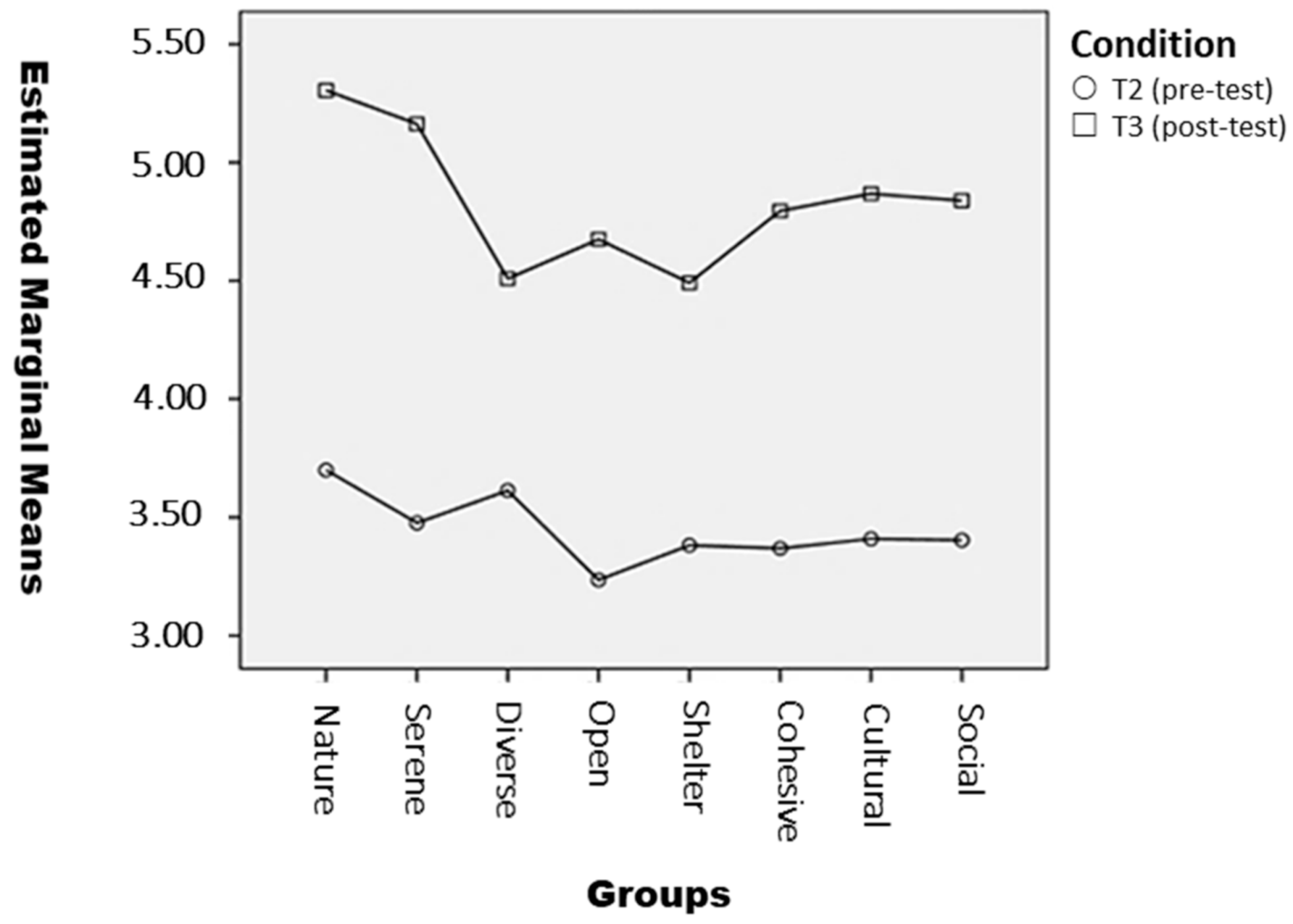
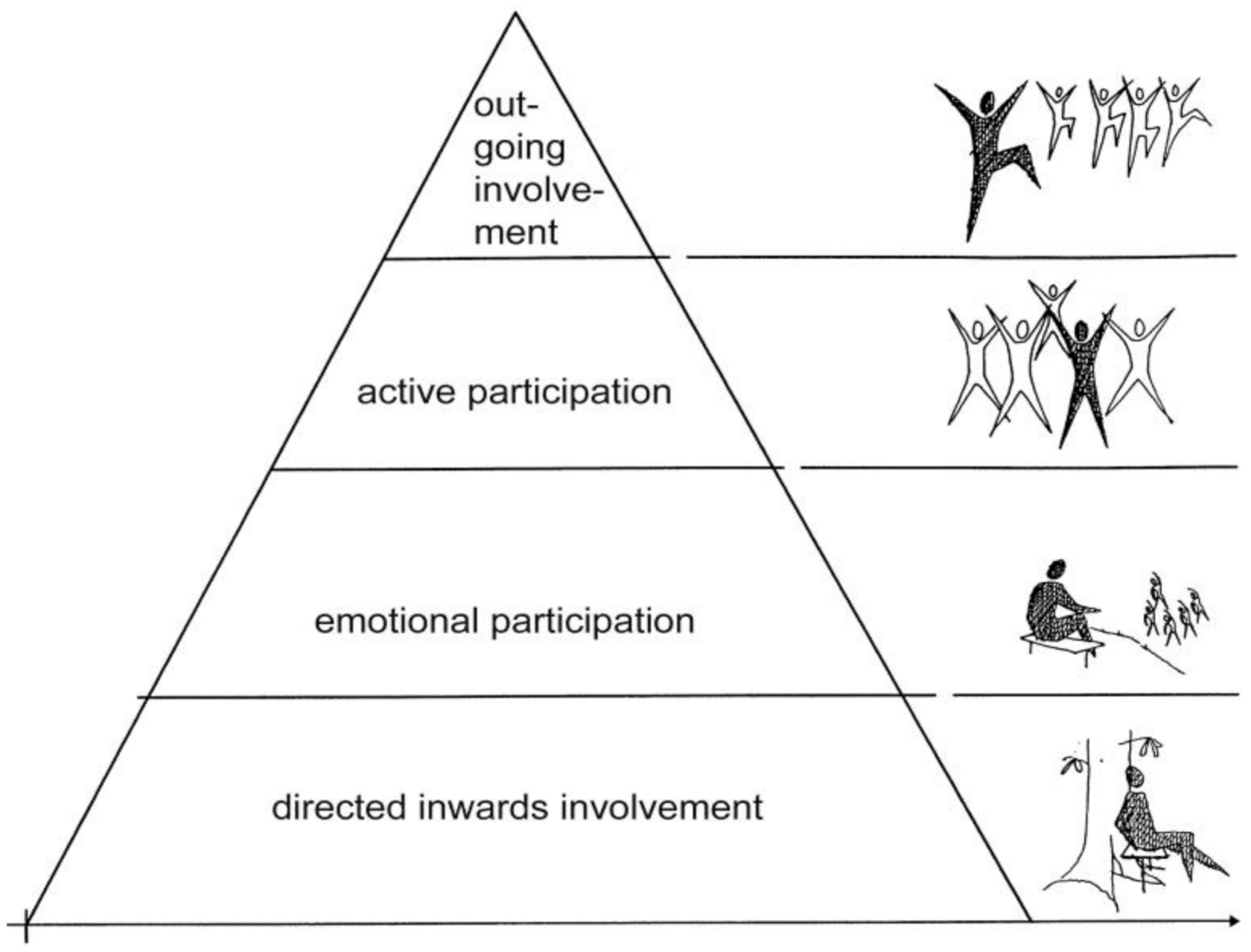
| PSDs | Sample of Photo | PSDs | Sample of Photo |
|---|---|---|---|
| Natural 1 | 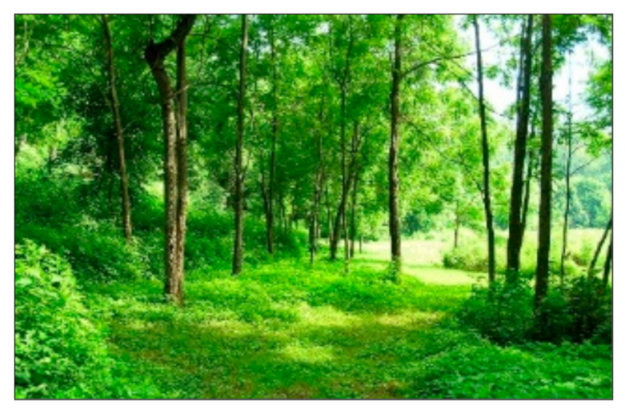 | Cultural [73] | 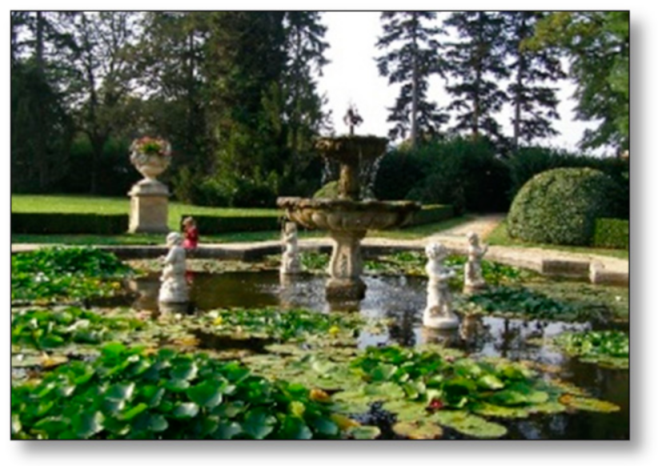 |
| Open [74] | 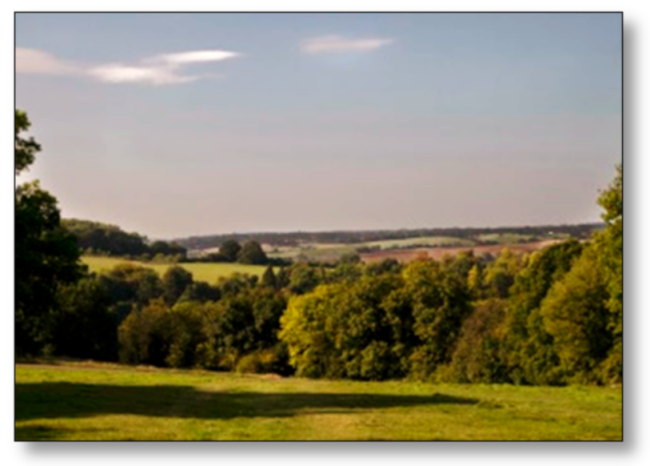 | Social [75] | 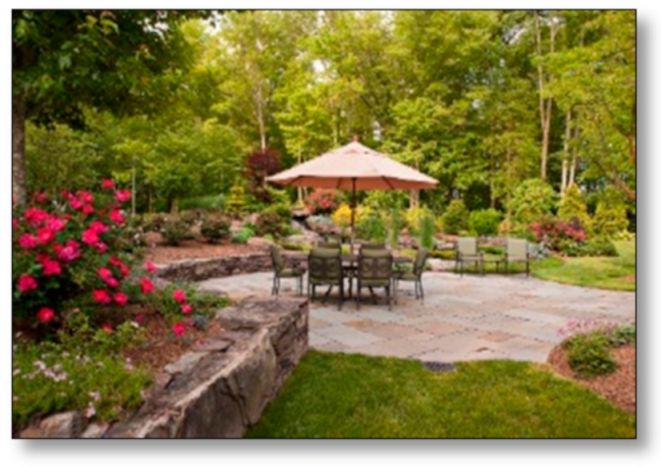 |
| Cohesive 1 | 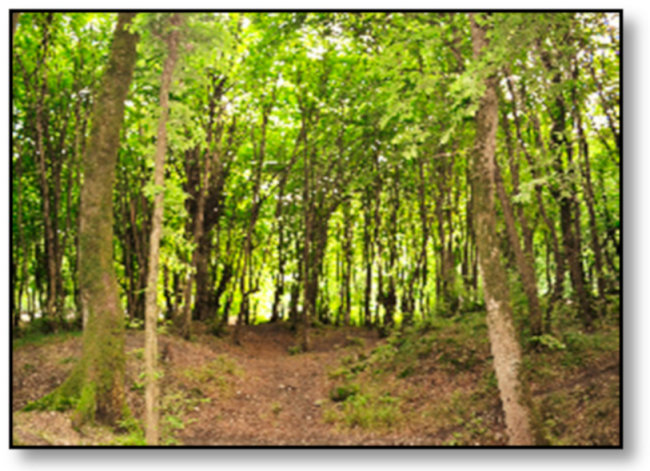 | Diverse [76] | 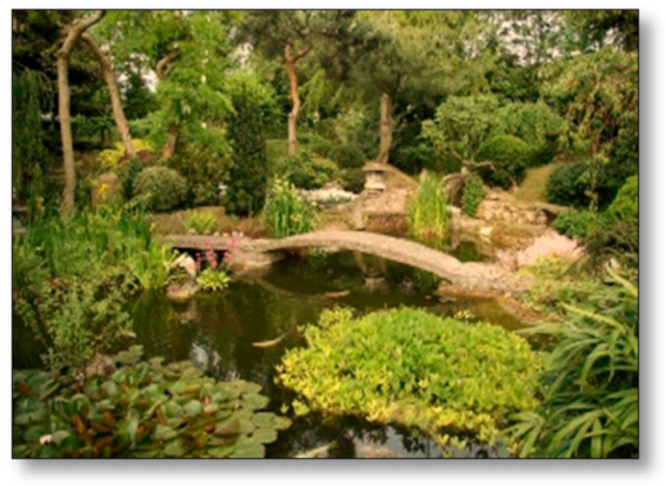 |
| Shelter [77] |  | Serene [78] | 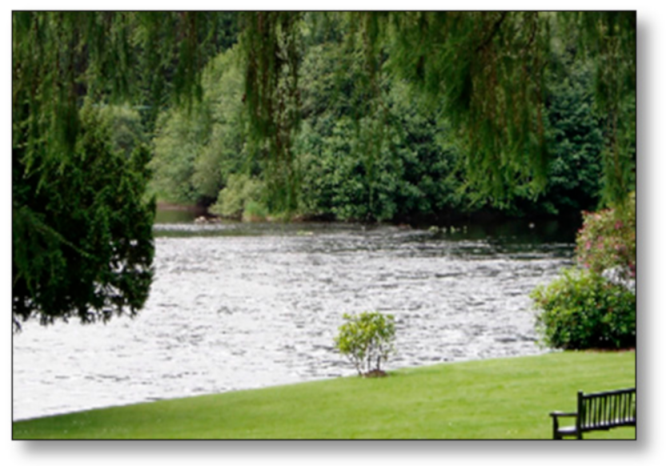 |
| Item | Phrasing |
|---|---|
| 1 | My mind is not invaded by stressful thoughts. |
| 2 | I can take time out from a busy life. |
| 3 | I can lose all sense of time. |
| 4 | I am thinking about everything and nothing at the same time. |
| 5 | I can make space to think about my problems. |
| 6 | I can leave all my problems behind me. |
| 7 | My mind just wanders in infinity. |
| 8 | I can imagine myself as part of the larger cyclical process of living. |
| 9 | I feel connected to the natural world. |
| Mean of Restorative State (1–7) | Marginal Means1 | Baseline T1 | Pre-Test T2 | Post-Test T3 | N |
|---|---|---|---|---|---|
| Natural | 4.50 (0.083) | 4.29 (0.66) | 3.40 (0.39) | 5.29 (0.50) | 18 |
| Serene | 4.32 (0.081) | 4.33 (0.79) | 3.47 (0.37) | 5.15 (0.52) | 19 |
| Diverse | 4.06 (0.079) | 4.43 (0.56) | 3.62 (0.46) | 4.52 (0.89) | 20 |
| Open | 3.96 (0.083) | 4.18 (0.74) | 3.21 (0.41) | 4.63 (0.56) | 18 |
| Shelter | 3.94 (0.079) | 4.32 (0.68) | 3.37 (0.30) | 4.48 (0.70) | 20 |
| Cohesive | 4.08 (0.082) | 4.09 (0.43) | 3.33 (0.45) | 4.73 (0.64) | 19 |
| Cultural | 4.14 (0.075) | 4.53 (0.72) | 3.42 (0.26) | 4.90 (0.64) | 22 |
| Social | 4.12 (.077) | 4.57 (0.66) | 3.42 (0.33) | 4.88 (0.60) | 21 |
Publisher’s Note: MDPI stays neutral with regard to jurisdictional claims in published maps and institutional affiliations. |
© 2021 by the authors. Licensee MDPI, Basel, Switzerland. This article is an open access article distributed under the terms and conditions of the Creative Commons Attribution (CC BY) license (https://creativecommons.org/licenses/by/4.0/).
Share and Cite
Memari, S.; Pazhouhanfar, M.; Grahn, P. Perceived Sensory Dimensions of Green Areas: An Experimental Study on Stress Recovery. Sustainability 2021, 13, 5419. https://doi.org/10.3390/su13105419
Memari S, Pazhouhanfar M, Grahn P. Perceived Sensory Dimensions of Green Areas: An Experimental Study on Stress Recovery. Sustainability. 2021; 13(10):5419. https://doi.org/10.3390/su13105419
Chicago/Turabian StyleMemari, Sanaz, Mahdieh Pazhouhanfar, and Patrik Grahn. 2021. "Perceived Sensory Dimensions of Green Areas: An Experimental Study on Stress Recovery" Sustainability 13, no. 10: 5419. https://doi.org/10.3390/su13105419
APA StyleMemari, S., Pazhouhanfar, M., & Grahn, P. (2021). Perceived Sensory Dimensions of Green Areas: An Experimental Study on Stress Recovery. Sustainability, 13(10), 5419. https://doi.org/10.3390/su13105419







